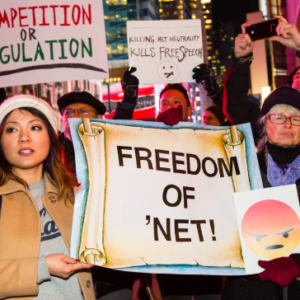America’s internet service is faster and more dynamic than ever. Thanks to affordable pricing and expanded access, households with broadband service rose 43 percent over the past decade. More than half of American households accessed 5G broadband in 2022, up 41 percent from the year before.
Despite that record, however, the Federal Communications Commission chairwoman, Jessica Rosenworcel, just announced she will bring back the flawed and (until recently) forgotten policy called “net neutrality.” The goal will again be to have the FCC treat the internet as a public utility. This approach will stifle innovation, hinder broadband deployment, and not address genuine efforts to close the digital divide.
When the FCC passed the Restoring Internet Freedom Order in December 2017, effectively ending the net neutrality rules, supporters of the regulations predicted it would kill the internet. CNN ran a headline saying that repealing net neutrality would be the “End of the Internet As We Know It.” Many claimed the internet would load one word at a time. Sen. Bernie Sanders predicted the internet as we know it “would cease to exist.”
Instead, average internet speeds in the United States have increased by more than 100 Mbps since the end of “net neutrality.”
But suddenly, we must “save the internet”? Even after the internet withstood the test of COVID, where everyone went digital during the dark days of the pandemic, handling traffic and streaming far better than Europe, which has net neutrality and had to routinely degrade services like YouTube and Netflix to handle the increased traffic.
Beyond the army of digital activists calling for net neutrality, Silicon Valley giants like Google, Netflix and Apple led the charge on net neutrality. University of Nebraska Law Scholar Gus Hurwitz wrote in The Washington Post in 2017, “The net neutrality rules are pure rent seeking by a content/edge industry as a way to hinder potential industrial competitors.”
Opponents of the net neutrality regime have highlighted the economic case against strict net neutrality rules, focusing on decreased investment. Others have also observed that inherent to network management is the need to prioritize data, especially in the case of more sophisticated networks.
The telecom blogger Morris Lane opined future 5G networks are not compatible with the definitions of net neutrality because, through prioritization, they “can be turned into a multi-lane highway, minus the hassle of building lots of separate physical lanes. Ideally, one of these lanes could be conjured up when needed, providing superior bandwidth, lower latency or other guarantees denied those cruising along the same road.”
As the FCC begins a new back and forth over this policy debate, it is doing so in a politically volatile environment that could more easily ensnare other layers of the internet stack into the tech political ping-pong match that began over net neutrality. This political dynamic was presciently predicted in a 2009 paper by internet scholars Berin Szoka and Adam Thierer, who argued, “Unless we find a way to achieve ‘Digital Détente,’ the consequences of this increasing regulatory brinkmanship will be ‘mutually assured destruction’ for industry and consumers.”
The vital lesson of net neutrality is evident beyond the question of broadband regulation. As these debates go on for years, without long-lasting pragmatic solutions and bipartisan agreement, regulatory uncertainty can trap consumers and companies in regulatory purgatory.
This doesn’t have to happen. Let’s let net neutrality die the death it richly deserves so our thriving internet can continue to live.





